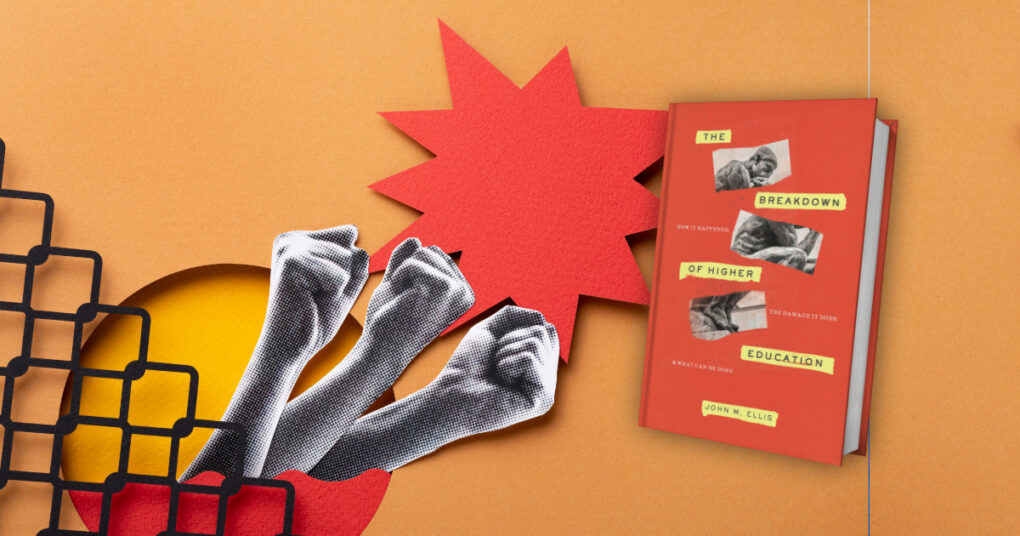The Breakdown of Higher Education: What Happened, The Damage It Does and What Can Be Done
John M. Ellis
Encounter Books
April 2020
224 pages
ISBN: 978-1641770880
The title of this book is self-explanatory. The author, a retired professor from the University of California, describes in appallingly lucid prose the almost complete control attained by far-left academic activists in all American state and private universities, which has resulted in an ingrained, extremely intolerant left-wing radicalism. This tolerates no alternative opinions on campus, even to the extent of violence against dissident speakers. He demonstrates how professors and lecturers use their influence to promote certain political views tolerating no alternative, and certainly no conservative dissenting views. He then goes on to discuss what might be done to counter this. This book was published in 2020, which means that it was written before the Covid crisis and the recent wars in Ukraine and the Middle East – events have moved things on in the universities since then, although not necessarily in a direction the author would approve. But that the handling of these crises by the US State Department and diplomatic service is fundamentally connected to the long-standing crisis within the universities will become obvious to a thoughtful reader of this book.
The book is divided into eight chapters, plus a brief preface. The author begins with the phenomenon of “cancelling”, which had become an occasion of near rioting on several campuses in the years immediately before Covid (2010-2020). A student group, usually conservative in nature (e.g., a pro-life group) would invite a speaker on campus, only for left-wing students on campus, aided and abetted by faculty (academic staff members), to protest, demonstrate and frequently become violent to the degree that the university frequently shut down the event. This was not an exclusively American phenomenon, incidentally Prof. Kathleen Stock of the University of Sussex was forced out of her position at the same time, by a campaign of startling viciousness. Prof. Stock had simply pointed out that the actions advocated by the trans-gender movement could have very negative consequences for vulnerable women and girls, but this was enough to get her persecuted by on-campus activists to the extent that she felt forced to resign.
The author notes that this rioting was the first time that the general public had become aware of the radicalism that had taken over university campuses, and goes on to say that the phenomenon most certainly did not begin in the decade 2010-2020, but had much deeper roots, which he intends to explore in subsequent chapters. In many ways, this book picks up where Allan Bloom’s The Closing of the American Mind leaves off. Bloom had charted the rise of a peculiar stripe of left-wing university activism from the ending of World War II to the early Eighties, associated with Michel Foucault and Jacques Derrida, forms of thought (or anti-thought) which made discourse and discussion all but impossible. Bloom, another university professor, was concerned about the effect of this anti-rational discourse on the capacity of his students to learn, and traced its manifestation in popular culture (his take on music is very interesting) and its origins in the émigré Central European intellectuals who fled to America as refugees during the Thirties and Forties. Ellis describes a situation where this has been institutionalized and normalized: What was startling to Bloom then, is simply how things are now. A movement which was largely philosophical in 1980 has been politicized, left the classroom, and become very threatening to those who do not share its views.
Chapter Two looks at the make-up of the academics currently in position at prestigious American universities, and notes how very left-wing they are by comparison with the population as a whole. He discusses recent surveys and statistics, and comments that, when properly analysed, the figures for left-wing dominance at universities are probably even higher than the statistics indicate. Crucially, this is particularly the case in literature, political science and history departments: these are the areas which form students for citizenship, and students are currently being taught that good citizenship is a matter of being left-wing.
Chapter Three analyses hiring procedures and the failure of safeguards that permitted a strongly left-wing cabal to effectively take over the universities – not just in America, but throughout the English-speaking world more generally. He observes that the STEM subjects (mathematics, sciences, engineering) have been more resistant to this, although there are problems there too. However, these subjects are so crucial that there is some inbuilt protection there: not even the most fiery radical wants to be on the bridge when it collapses, or the plane when it falls out of the sky. The interesting field is medicine and pharmacy: this book was written before Covid, and it would be interesting to have the author’s comments on allegations of bad practice and the suppression of legitimate research within high-level medicine and pharmacy during that crisis.
In chapters Four “Sabotaging Education for Citizenship” and Five “Graduates Who Know Little and Can’t Think”, he takes up the question of the impact of all this on students. He comes to the same conclusion as Bloom a generation earlier: it is catastrophic. It is inevitable that it would be: since Plato, we have known that one can know only the stable. That may be very complex, and various forms of dynamism are usually present, as Aristotle pointed out, but fundamentally these kinds of dynamism must be repeatable and recognizable if we are to know them in any meaningful sense. The anti-discourse discourse promoted by Foucault and Derrida in the wake of the dominance of the Frankfurt School within the American system inevitably confuses students and leaves them utterly cynical about any kind of truth-claims. This is catastrophic for the human mind, since it must know truth: what is not true cannot be said to be known in any meaningful sense. Therefore, students may work very hard, and yet emerge knowing next to nothing. But, as the author points out, they are not working hard: they spend less time studying (according to surveys) than at any time in history. They have figured out that professors want a certain line fed back to them, and it is easy to do that. The rise of AI has only exacerbated this situation: now we have machines talking to machines and the human mind remains a blank slate. Of course, as C. S. Lewis pointed out eighty years ago, this purely mechanical world is an illusion: some human being is always there in the background, controlling the technology for the rest of mankind. We are back to the old Roman question: cui bono? Who benefits?
Chapters Six and Seven take up the question of the culture on campus. This problem has recently emerged very sharply with the tragic death of Alexander Rogers at Oxford, possibly the most prestigious university in the world. Again, it is not a new problem, and the author cogently and calmly tracks its development in these chapters. Roger’s death, God help him, was the result of the completely poisonous culture among students of prestigious institutions, but this happens as a result of what they are hearing in lectures. Ellis goes through the bullying, failure to tackle legitimate complaints, breakdown in standards and the impossibility of dealing with that. A major factor in this problem in American institutions is the fear of offending certain minority groups: not the fear of the consequences of deliberately offending an innocent member of a minority, but the deep and well-founded fear of accidentally offending, however insignificantly, people claiming minority status. This even affects certain scientific fields: anyone claiming certain genetic predispositions for women, for example, can wave goodbye to their career. The author gives a few examples of the appalling treatment of academics who had fallen foul of the current status quo in the university: even if the case were to end well, it is an indictment of the university as it has become that it should ever have arisen in the first place. Unfortunately, this is so ingrained at this stage that most academics take it for granted: career advancement comes about as a result of successfully working out whom you are to flatter. However, it will come as a profound shock to those who studied at universities when they had integrity and conveyed real knowledge. More recent engineering and science graduates may still find it a shock, since their fields are still repositories of real knowledge – although also endangered, as the author points out. However, people should know about this situation, since most of them will have children who still need educating, and if the universities are as bad as all that, how are we to do it?
This is the subject of Chapter Eight, “What Can Be Done To Restore Higher Education?” Much of what the author advocates here does relate largely to the institutional structures within the American situation. He advocates a kind of third-level home-schooling, with discussion groups organized to deal with the lack of tutorials. With very motivated students and capable facilitators this could work. He is clearly talking about classical humanities disciplines here, which you will not find taught almost anywhere these days in the way they used to be. He comments that as the knowledge of this abysmal situation within the universities gets out, there will probably be new institutions which will return to the classical teaching of humanities – Steubenville University in Ohio would be an example of one such institution. His discussion of the financial situation is interesting, but applicable largely to America, since other countries tend to have State-funded higher education. But the question “What to do?” is applicable everywhere.
This book, as mentioned above, was published in 2020, before Covid and the current wars in Ukraine and the Middle East. The furore over the handling of Covid, which could not be suppressed in spite of all efforts to do so, raised fundamental questions about the funding of medical research and potential conflicts of interest there. Although the people involved would seem to cover a wide range of political types, from government apparatchiks to hard-nosed capitalists and shareholders, it is interesting that those who raised those questions were largely characterized as “right-wing”: “conservative” – now term s of abuse. More interesting again was the handling of the student protests over the Israeli bombardment of Gaza on the Columbia University campus: the protestors were largely very left-wing and hard to characterize as “right-wing”, so when the university came under pressure to suppress them, the term of disapprobation was “anti-semitic” – although many of the protestors were in fact Jewish. Although we are not closer to a solution to the monoculture of the universities, especially the prestigious ones such as Oxford and Columbia, it is certainly true that many more people now are aware that there is in fact a problem of extreme importance to our culture there.
About the Author: Dr Catherine Kavanagh
Dr Catherine Kavanagh is Senior Lecturer in Philosophy at Mary Immaculate College (University of Limerick) and Director of Postgraduate studies there. She received her B.A. and M. Phil. from UCD and her Ph.D. (2002) from the University of Notre Dame.

